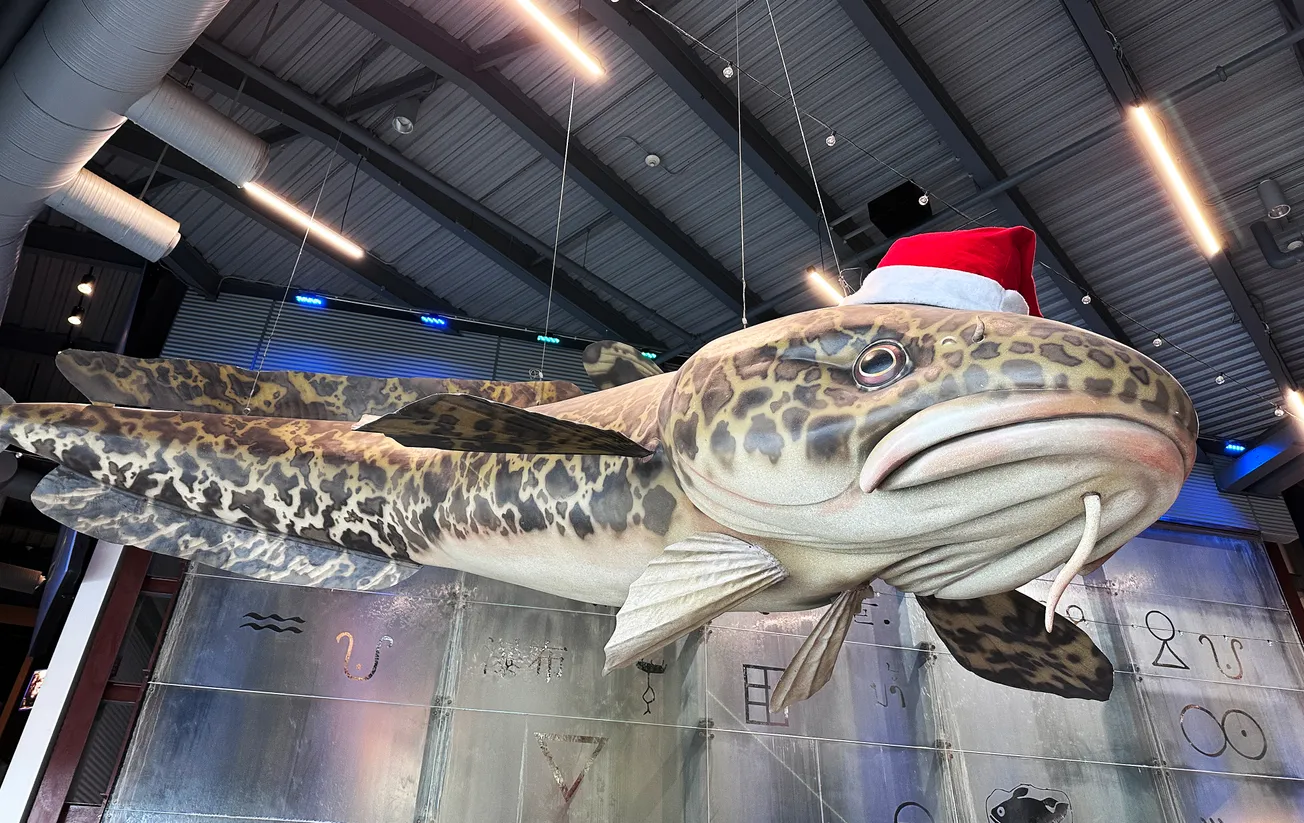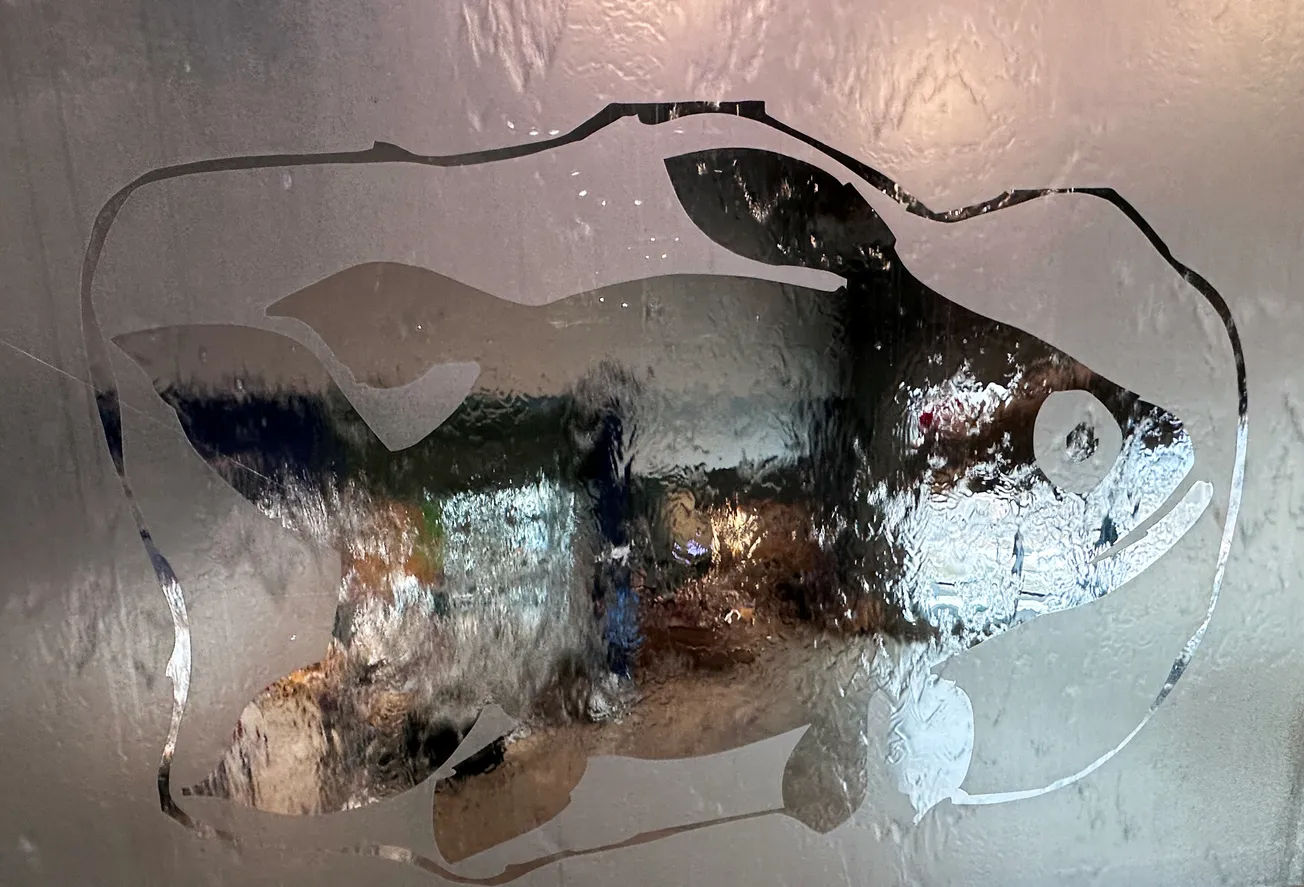DULUTH — The Great Lakes Aquarium has always been a bit like Lake Superior itself — wild, beautiful, unpredictable, and not always easy to control.
What began as a bold waterfront dream in the late 1980s nearly belly-flopped into bankruptcy a few years after opening. Today, though, it’s one of Duluth’s most-visited tourist destinations — a rare comeback fish story, full of sharp turns, deep dives, and slow, steady growth.
Let’s go back to the beginning, when Duluth’s post-industrial waterfront looked more like a place to dump a Buick than host a school field trip. A group of local visionaries — attorney Nick Smith among them, with key land donated by Julia and Caroline Marshall — had the guts to believe Duluth’s front porch could be something more. They dreamed of a “Lake Superior Center,” part educational hub, part civic anchor, part tourist magnet.
That was the pitch. The reality? A whole lot messier.

The final concept evolved into what we now call the Great Lakes Aquarium, a $34 million project built with a cocktail of city-backed bonds, state dollars and private gifts. It opened its doors on July 29, 2000 — shiny, hopeful, and already a little behind schedule.
Consultants told the city to expect 400,000 visitors annually. They came up short. Real short. First-year attendance was 30% lower than projected. And with operating costs gnawing through the budget like a hungry otter, the aquarium started hemorrhaging cash.
It defaulted on its bonds within 18 months.

By late 2002, the place went dark. Temporarily closed. A $34 million idea nearly sunk before it had learned to swim.
In a classic Duluth move — duct tape, bootstraps, and some hail-Mary hope — the city handed the keys to Ripley Entertainment in 2003. You know, the folks behind “Believe It or Not.” They brought in saltwater tanks (jellyfish, sharks, the whole spectacle) and gutted the staff by two-thirds. It kept the lights on, sure, but locals grumbled that the mission — freshwater science, Lake Superior, our own backyard — was drifting far from shore.
By 2007, Ripley was out.

In stepped Jack LaVoy, a local leader with a back-to-basics vision. He and his team launched a three-part strategy: fix what’s broken, replace what’s stale, and remove what isn’t working. Slowly, painfully, trust was rebuilt. They focused on hands-on learning, rotating exhibits, and making the aquarium feel like Duluth’s again — not some corporate outpost trying to mimic Monterey.
And here’s where it starts to get good.
By the early 2020s, the tide was turning. Attendance crept upward. In 2023, the aquarium welcomed over 214,000 guests — its best showing in more than two decades. In 2024, that number rose again, topping 225,000.
A series of hits helped drive the surge. “Oceans Alive” brought in a giant Pacific octopus and a cast of exotic marine characters. “Lava to Lakes,” opened in May 2025, walked visitors through Minnesota’s dramatic geological history — complete with moon jellies and shark touchpools. There were horseshoe crabs and giant isopods, outdoor learning decks and local art collaborations. Suddenly, the place felt alive.

And while winter still hits hard — attendance dips, subsidies help — the Great Lakes Aquarium has carved out something rare: relevance. In 2024, its school programs alone reached over 14,000 students. Revenue now comes from ticket sales, memberships, event rentals, outreach programs and more.
“Great Lakes Aquarium didn’t have an easy start,” Duluth Mayor Roger Reinert said. “There were many loud critics. But today, thanks to strong leadership and a clear commitment to its mission, it has not only survived — it’s thriving.”
He pointed to Executive Director Jay Walker’s steady hand, noting that the aquarium now ranks alongside Canal Park, the DECC and Bayfront Festival Park as Duluth’s crown jewels.
Still, like any public institution, the aquarium faces big decisions about where to go next.
Possibilities include adding a signature attraction — a shark tunnel, maybe, or a deep-sea exploration wing. Sleepovers under the tanks, behind-the-scenes tours, citizen science initiatives, light shows in the winter, augmented reality apps — all of it on the table.

Cultural storytelling is another ripe opportunity. Deeper collaboration with regional Indigenous communities could bring Lake Superior’s spiritual and ecological stories to the forefront. And infrastructure needs — parking, roofing, accessibility — will require real investment.
“In my view, the Great Lakes Aquarium — like many Duluth attractions — will always face an uphill climb. Our short tourism season and long winters mean anything that doesn’t involve snow or ice struggles to draw visitors the other nine months of the year,” said longtime local observer Fred Friedman. “Aquariums in general are expensive to maintain, and that cost trickles down to admission prices. The national aquarium in Baltimore charges $50. Shedd in Chicago? Forty-eight bucks. Duluth is $20 — but you're getting far less than half the experience.”
Friedman added that while reduced rates exist for children and low-income residents, more should be done. “It should be free for local kids, period. And Duluthians should be able to park for free. We already subsidize these places to attract the 952ers, the 763ers, and the 651ers to drive north. One big reason suburban businesses thrive? Free parking.”
Still, Friedman’s heart is with the mission. “I root for all of these attractions to make it. I’m for anything that gets people off their phones and out into the world, learning and experiencing things together. Let’s just make it as affordable — and interesting — as we possibly can.”

If the aquarium’s story proves anything, it’s that slow and steady — with a splash of vision — wins in Duluth.
It may never be flashy. But it’s real. It’s ours. And it's one of the few places on the planet where you can watch a sturgeon swim past your kid’s nose while learning why the health of freshwater matters more than ever.
From near-ruin to renewed glory, the Great Lakes Aquarium isn’t just a tourist stop anymore. It’s a survival story. A Duluth story. One worth watching.







